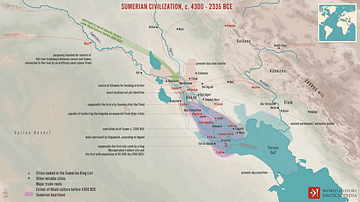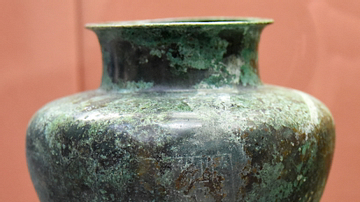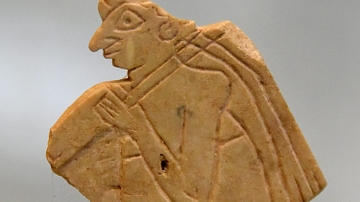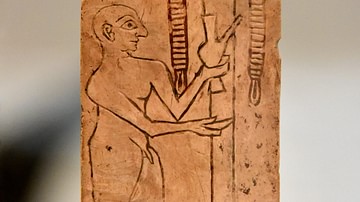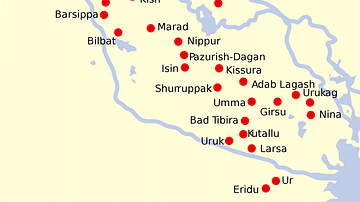Illustration
The Vase of Warka (also called Uruk Vase) is one of the earliest surviving examples of narrative art. It was excavated (in fragments) by a German excavation team in a temple complex dedicated to the goddess Inanna at the city of Uruk (in southern Iraq) in 1933-1934 CE. It is about 1 meter tall.
It was looted from the Iraq Museum somewhere between April 10 to 12, 2003 CE. The display case was toppled and broken and then the looters detached the Vase from its reconstructed base. On June 12, 2003 CE, a group of three unidentified young men approached the Iraq Museum's security gate, driving a red Toyota car. They lifted a blanket from the car's boot, wrapping 14 pieces of the Warka Vase. They handed them to the Americans and then they disappeared. The base and upper margin suffered significant damage.
From Warka (ancient Uruk), Iraq. Jemdet Nasr Period, 3000-2900 BCE. On display, Sumerian Gallery, at the Iraq Museum in Baghdad, Republic of Iraq.
Cite This Work
APA Style
Amin, O. S. M. (2019, April 08). The Warka Vase. World History Encyclopedia. Retrieved from https://www.worldhistory.org/image/10393/the-warka-vase/
Chicago Style
Amin, Osama Shukir Muhammed. "The Warka Vase." World History Encyclopedia. Last modified April 08, 2019. https://www.worldhistory.org/image/10393/the-warka-vase/.
MLA Style
Amin, Osama Shukir Muhammed. "The Warka Vase." World History Encyclopedia. World History Encyclopedia, 08 Apr 2019. Web. 17 Apr 2024.


